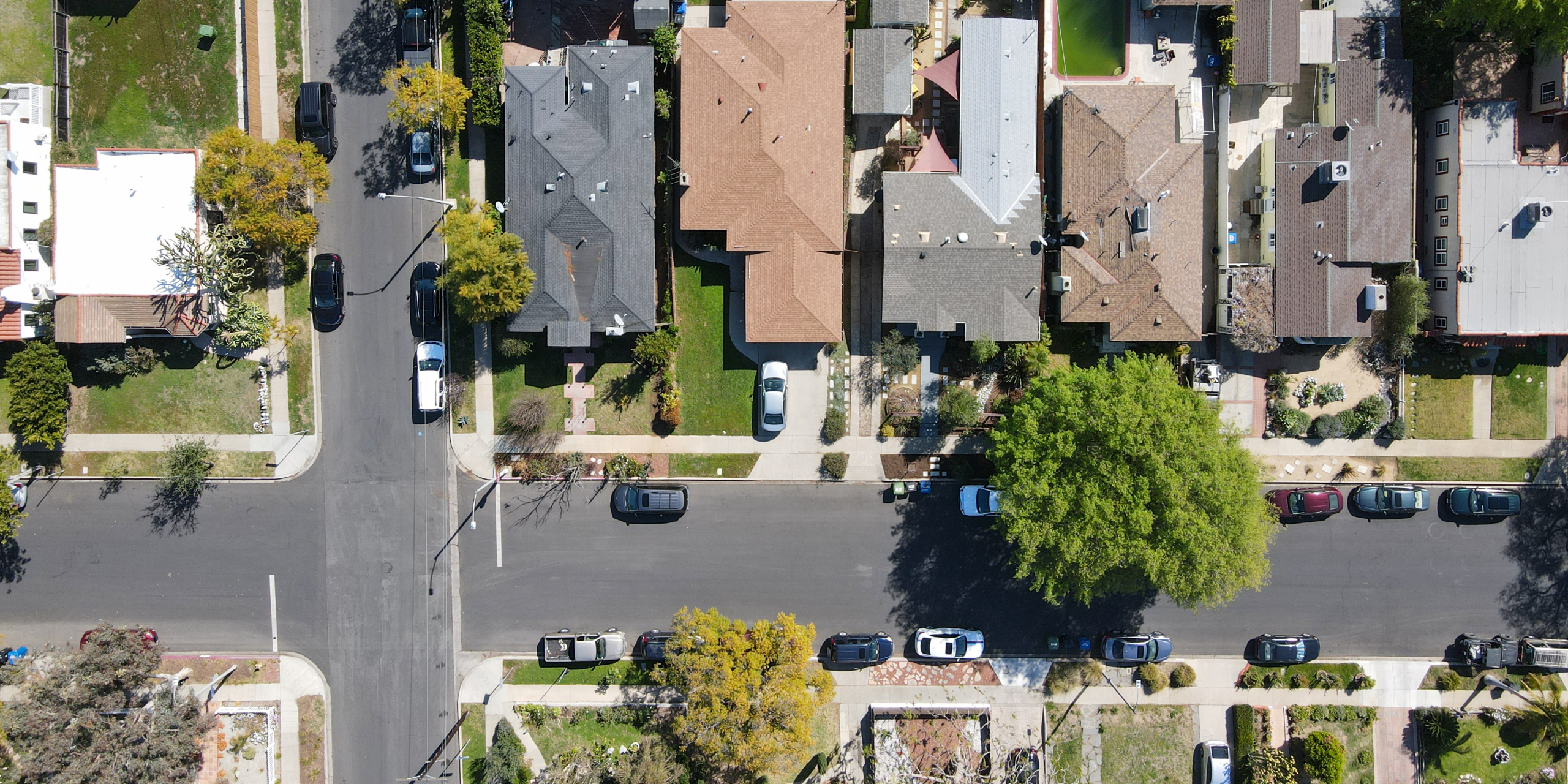UCLA researchers study impacts of streets on urban heat
New research finds shade, such as from trees, to be the most effective strategy to cool hot city streets
Photo by Thomas De Wever / iStock
by Mara Elana Burstein
Last year was the fifth-hottest year on record. And in the U.S., heat waves kill more people than hurricanes, tornadoes and floods combined. These impacts most dramatically affect people in cities, and disproportionately affect poor and minority communities.
The design of cities can make the effects of extreme heat worse. One culprit that has been singled out in the past: streets. Planners often regard streets as targets for mitigating urban heat because they are abundant, publicly-owned, low-vegetation surfaces that absorb more heat than they reflect.
But there has been little research on streets’ contribution to regional urban heat. This is the focus of UCLA researchers’ new study published in Environmental Research Communications and featured in an op-ed in Transfers Magazine. The study examines the relationship between road area and land surface temperature throughout urban areas in Southern California.
“Our results indicate that planners interested in mitigating heat may want to focus more on people’s experience and what surrounds streets than streets themselves,” said V. Kelly Turner, co-director of the Luskin Center for Innovation and associate professor at the UCLA Luskin School of Public Affairs.
The researchers found that wide streets don’t have a consistent impact on urban heat. Instead, heat is primarily driven by the unavailability of vegetation and other forms of shade.
“Tree cover, shade — this really helps pedestrians experience less heat. Shade is the primary cooling mechanism,” said Turner, who also co-leads a multidisciplinary, Pritzker Family Foundation–funded UCLA project called Heat Resilient L.A.
Some cities are starting to invest in lighter-colored, heat-reflective surfaces as a counter to black, heat-absorbing streets. But it is not that simple when it comes to interactions between local surface temperatures and how people experience those temperatures.
“It seems counterintuitive, but it’s possible to reduce urban heat while making people less comfortable outside. For example, light-colored surfaces reflect radiation and can make people feel hotter — on a warm day, pedestrians might experience both direct heat from the sun and strong, immediate reflected heat from pavement,” said Ruth Engel, project manager for environmental data science at the Luskin Center for Innovation.
This doesn’t mean deploying cool pavement in cities is not effective. But targeting streets alone may not be the most efficient approach to mitigate urban heat, especially in terms of public health effects for pedestrians.
So what should local policymakers do?
As an urgent matter of public health and climate justice, cities should prioritize making neighborhoods cooler at the local level. The researchers recommend focusing less on the urban heat island – a regional phenomena – and more on the comfort of residents, by providing increased shade with trees and umbrellas.
To learn more about the findings, click here. For more research on extreme heat, visit our Climate Program webpage.








